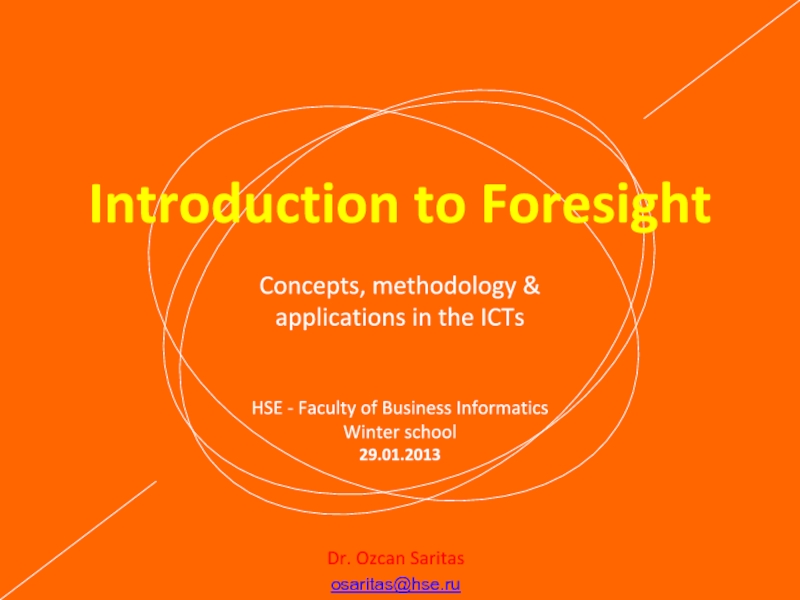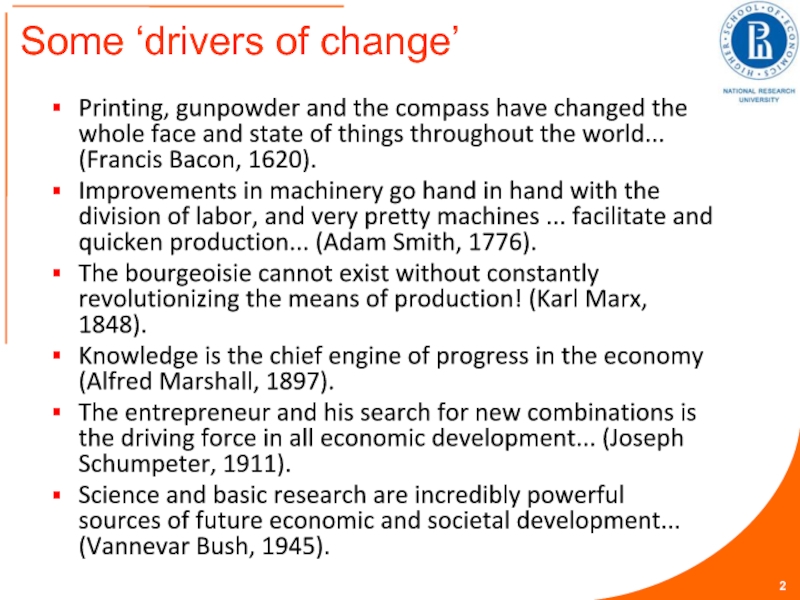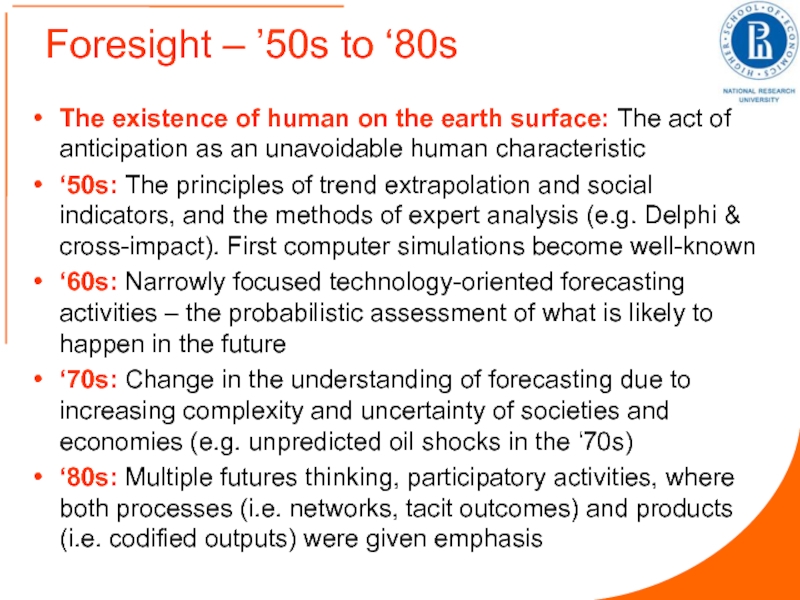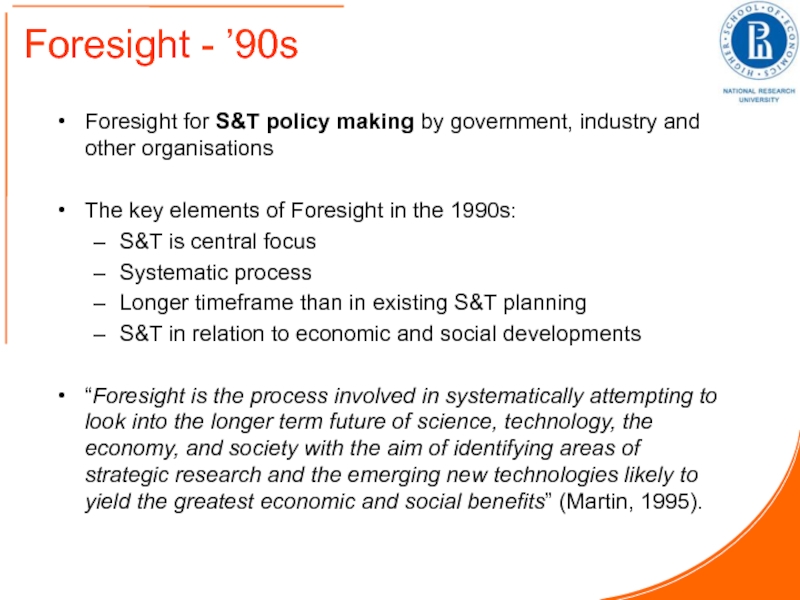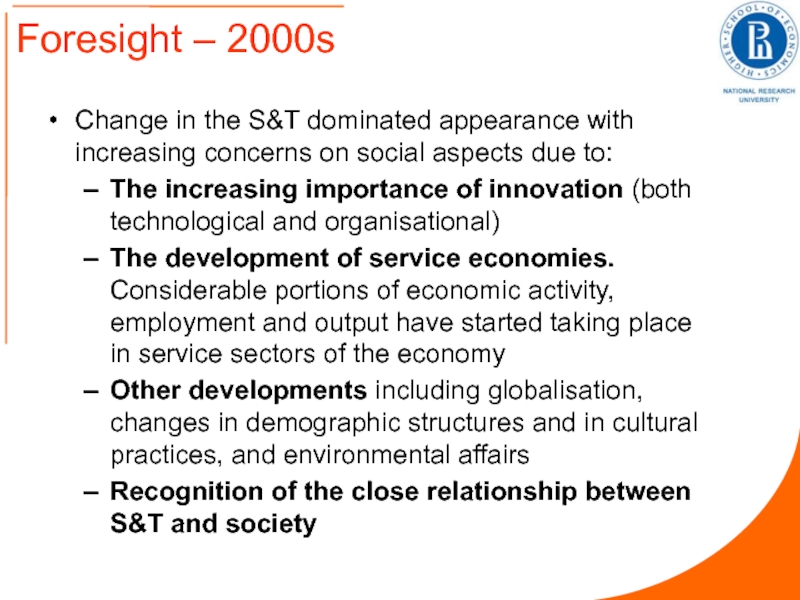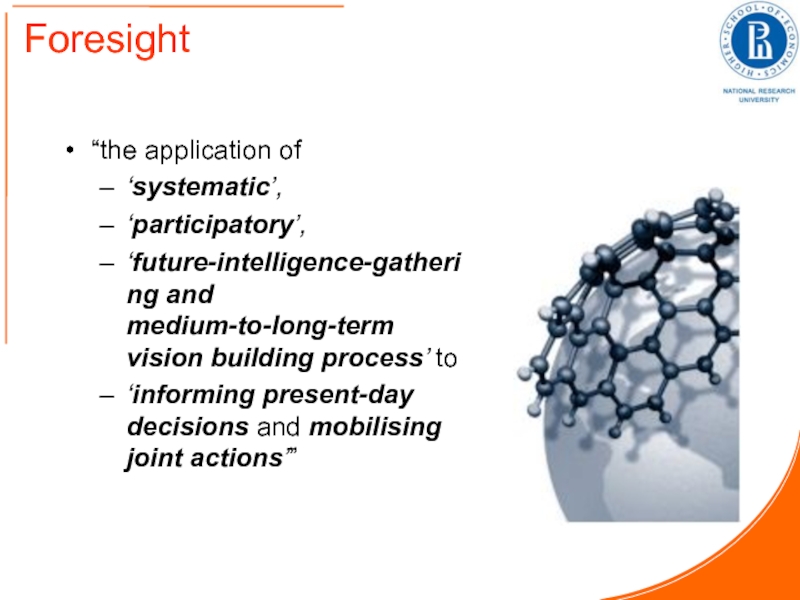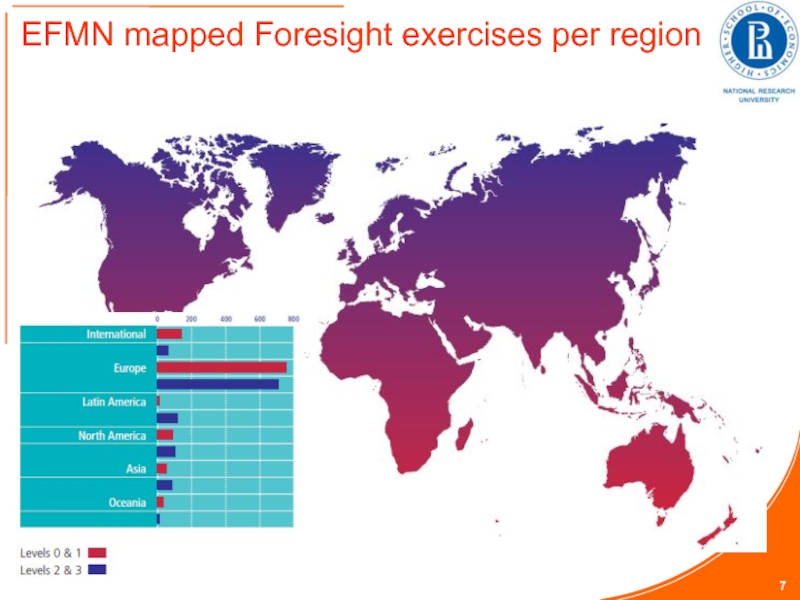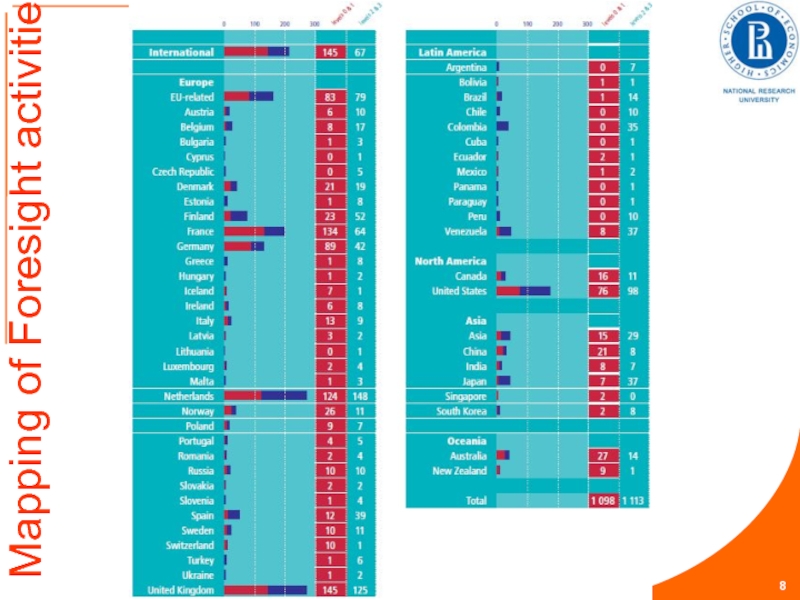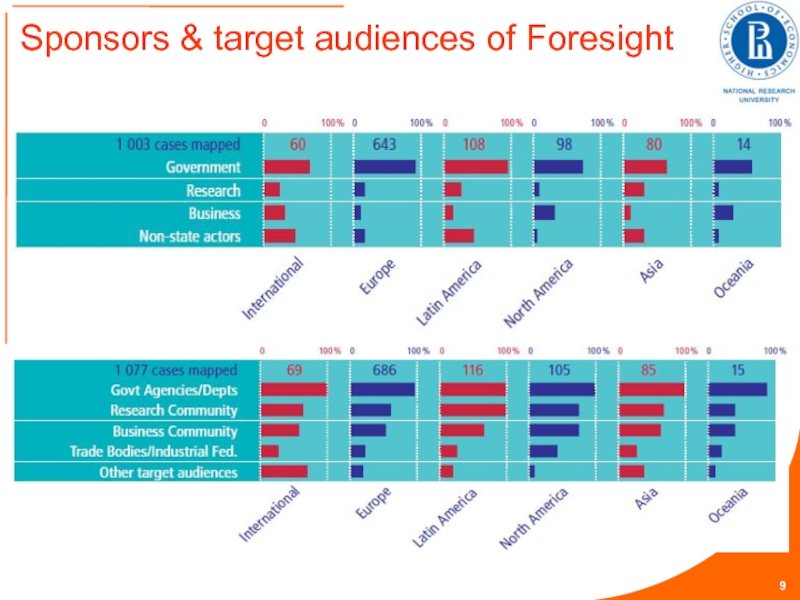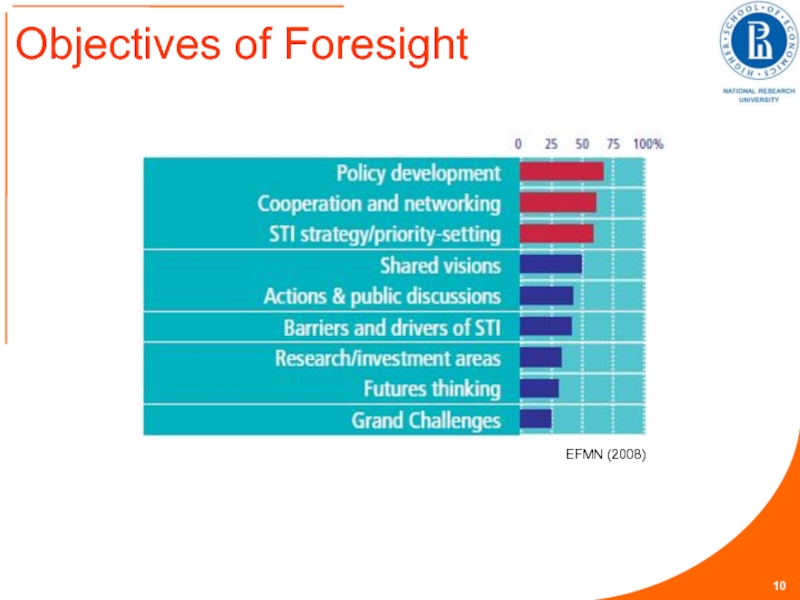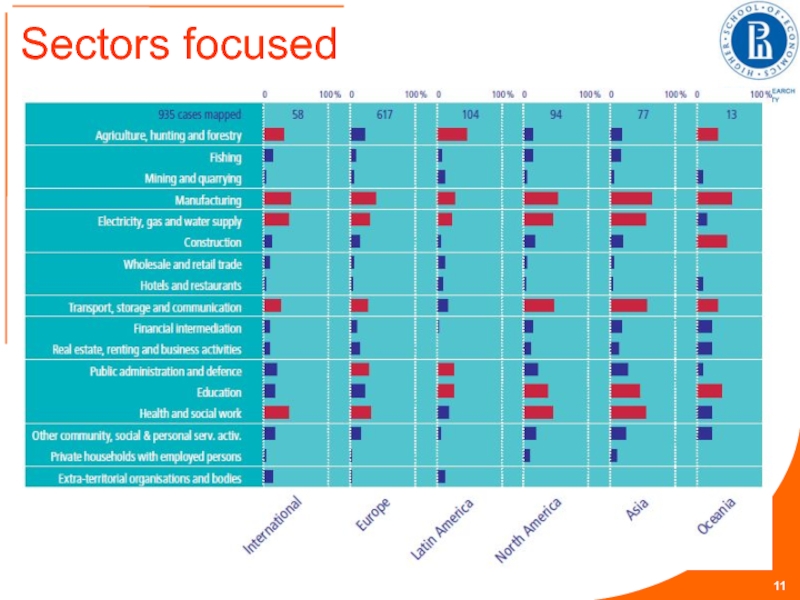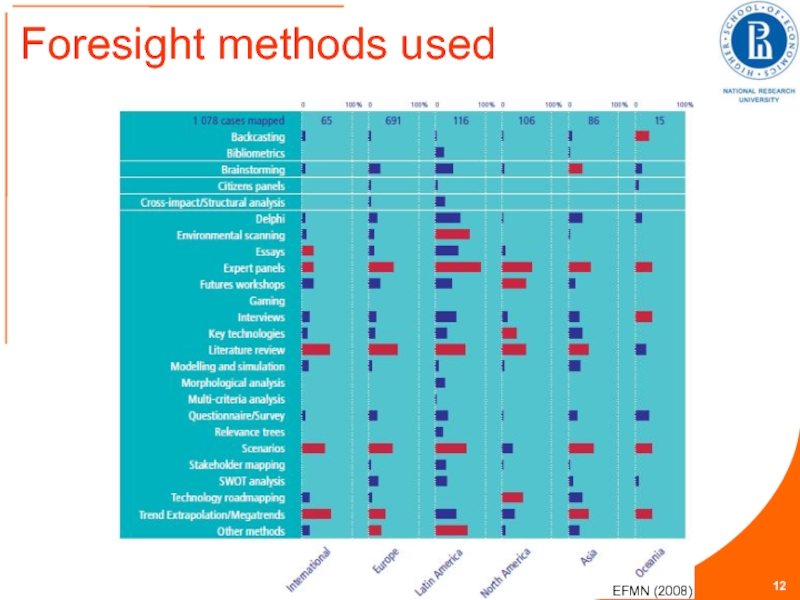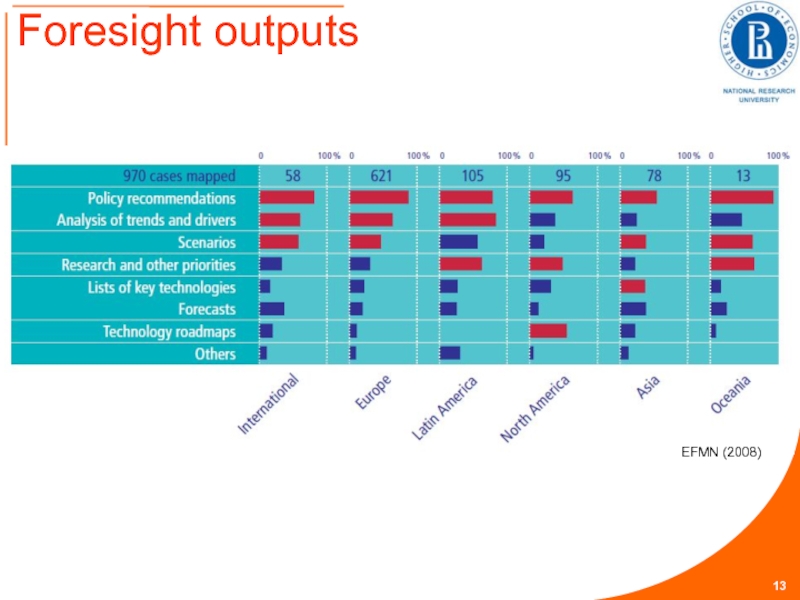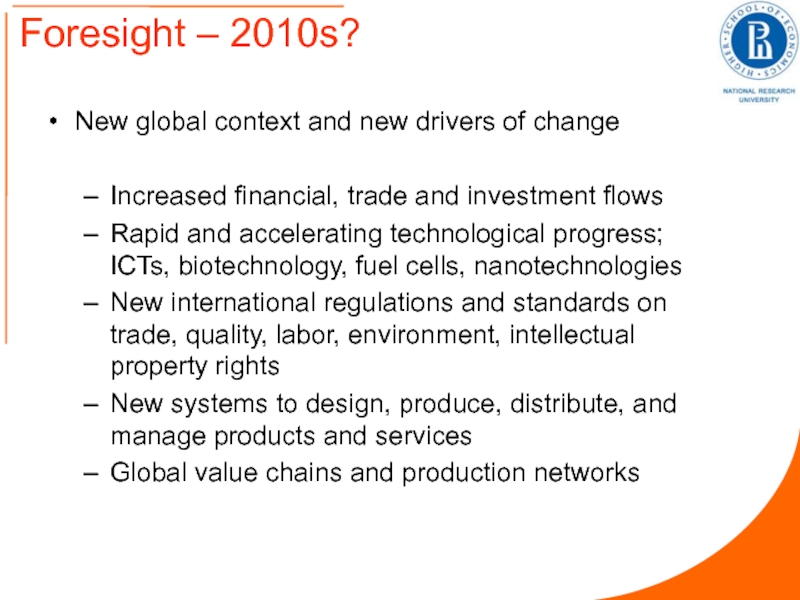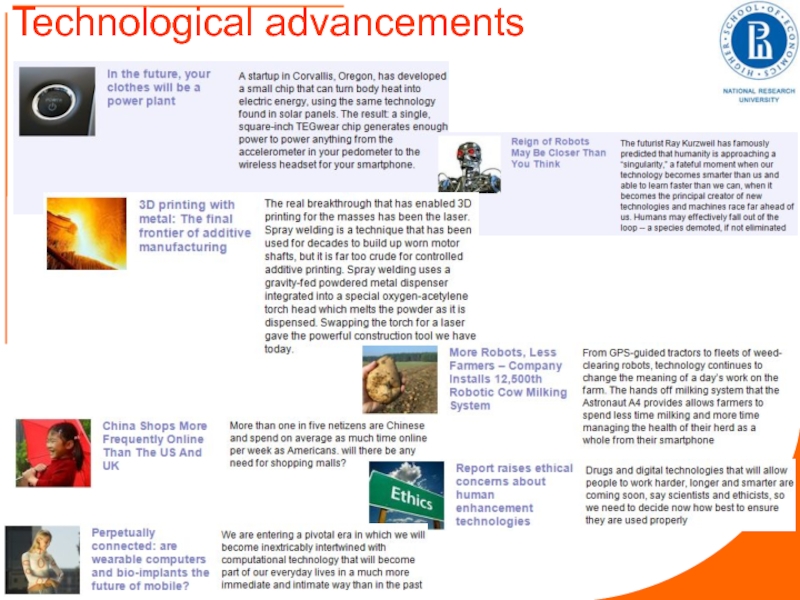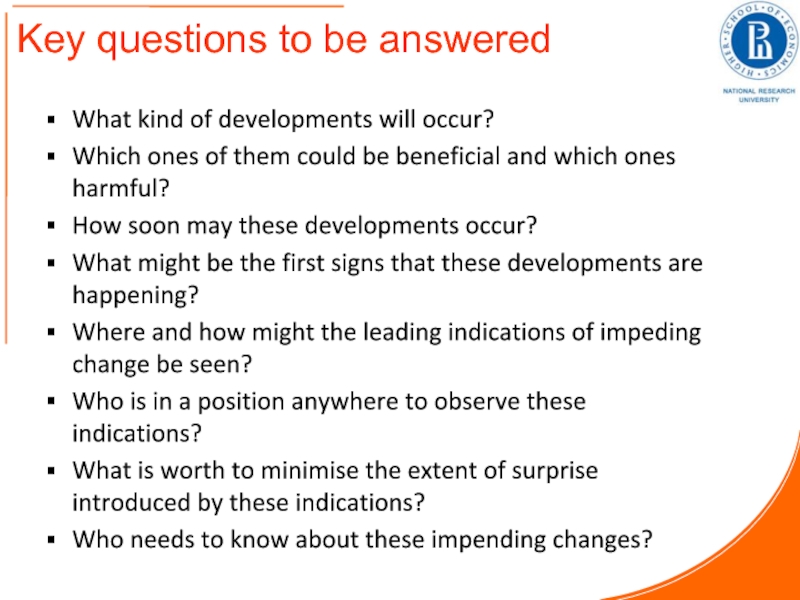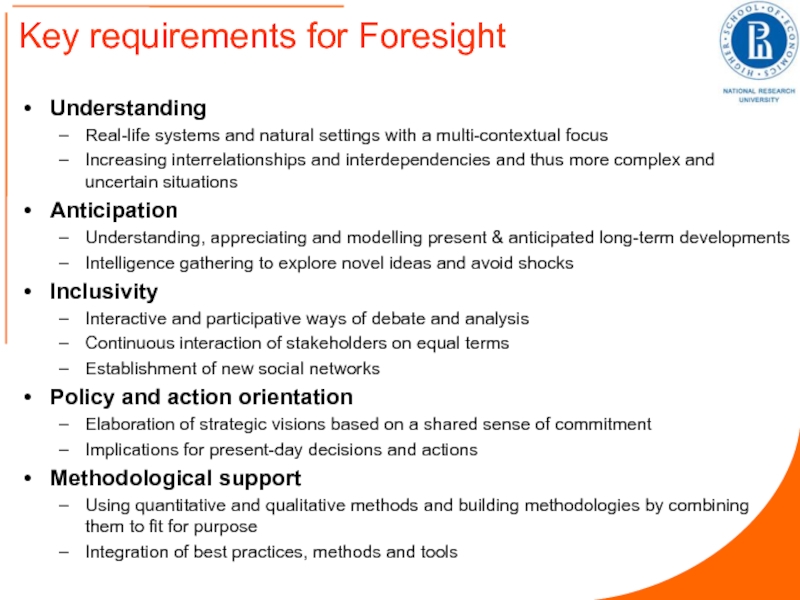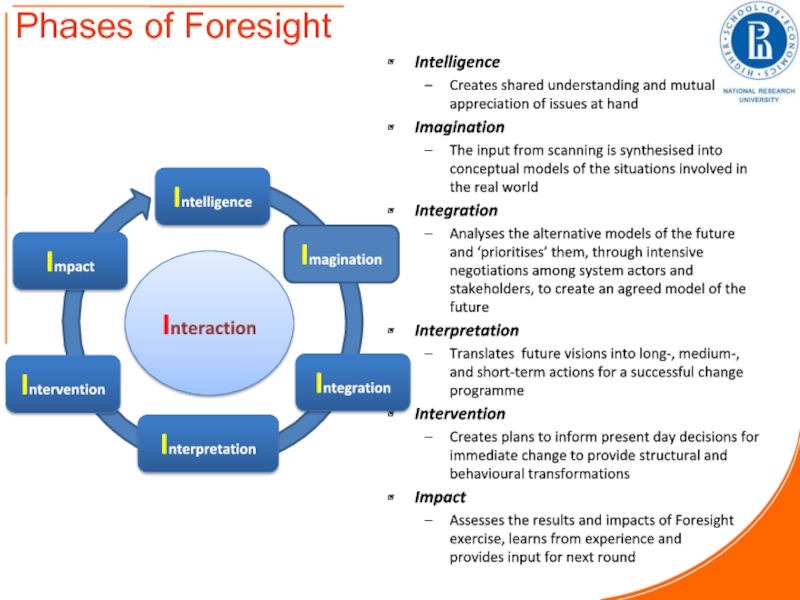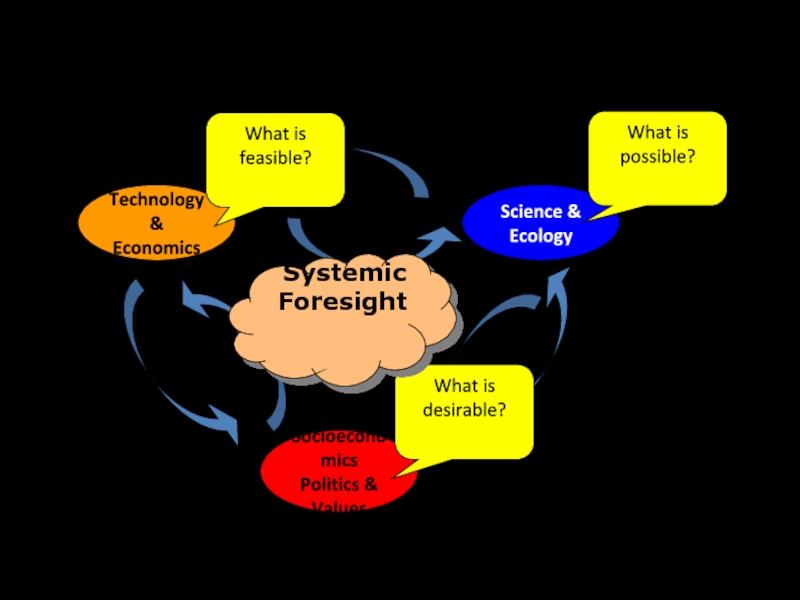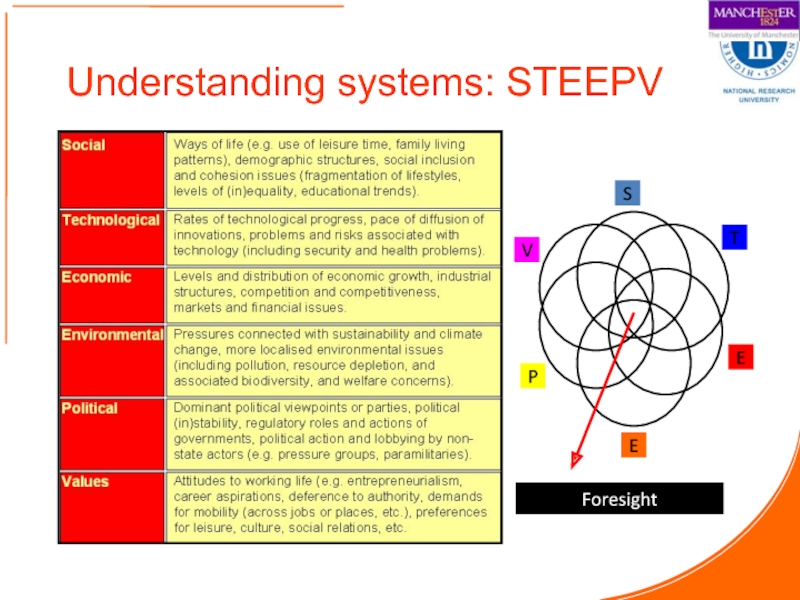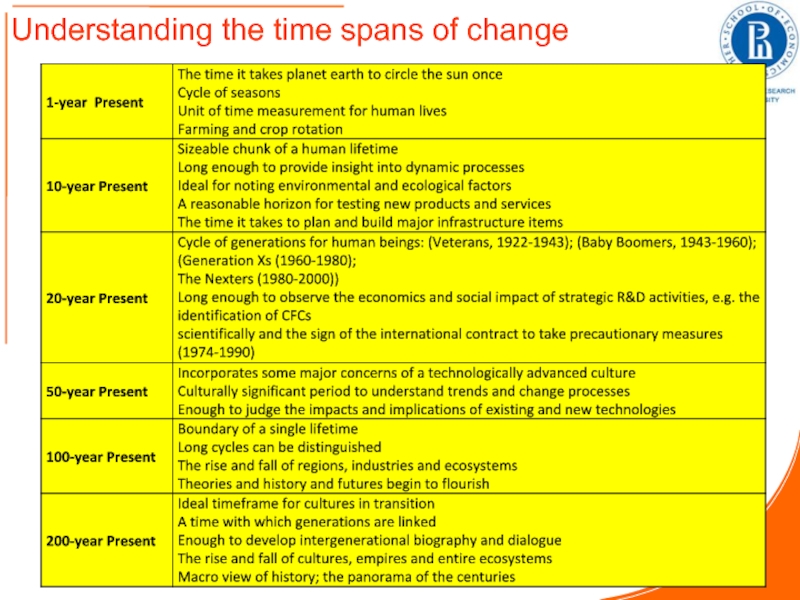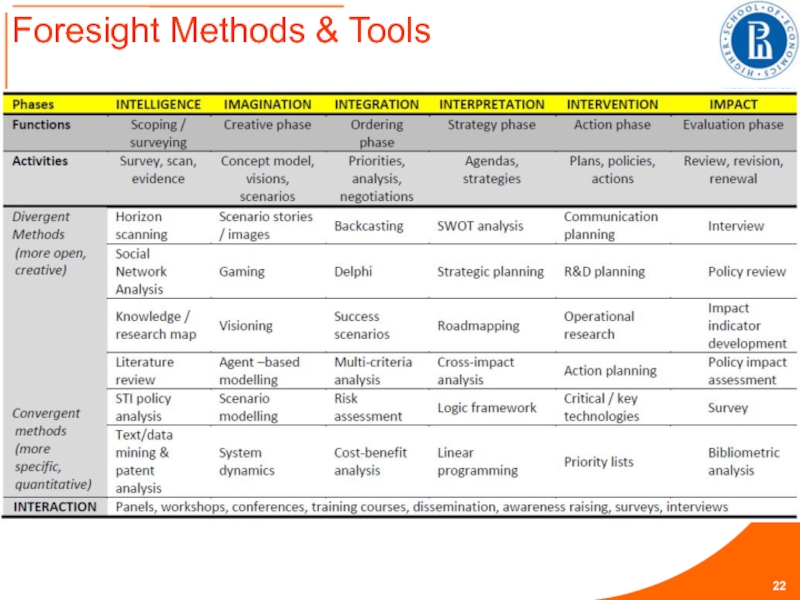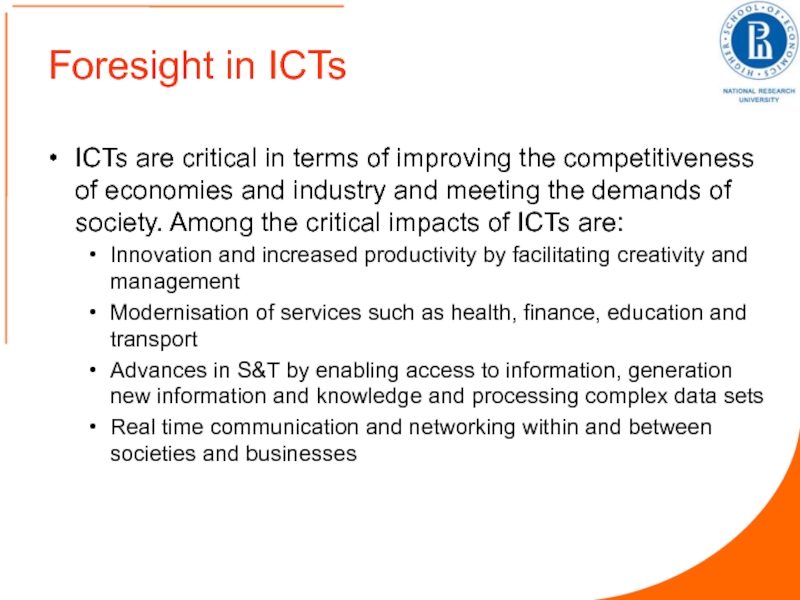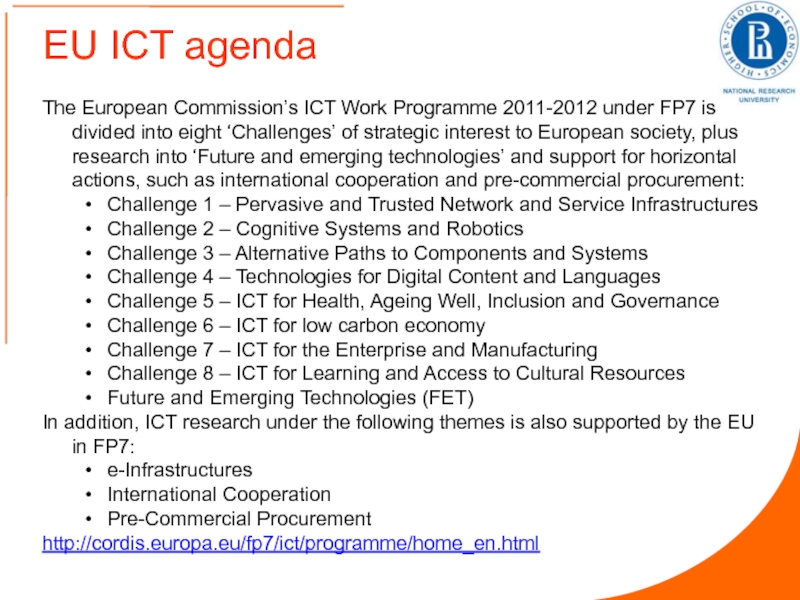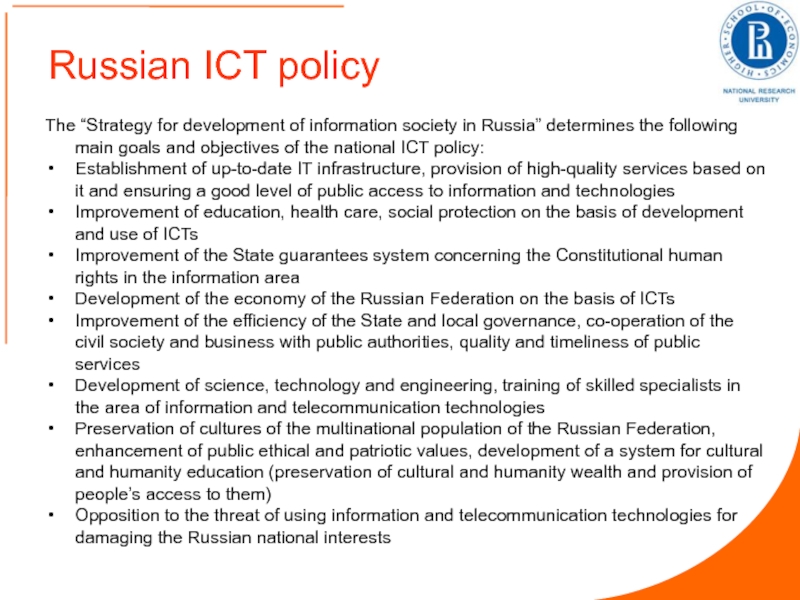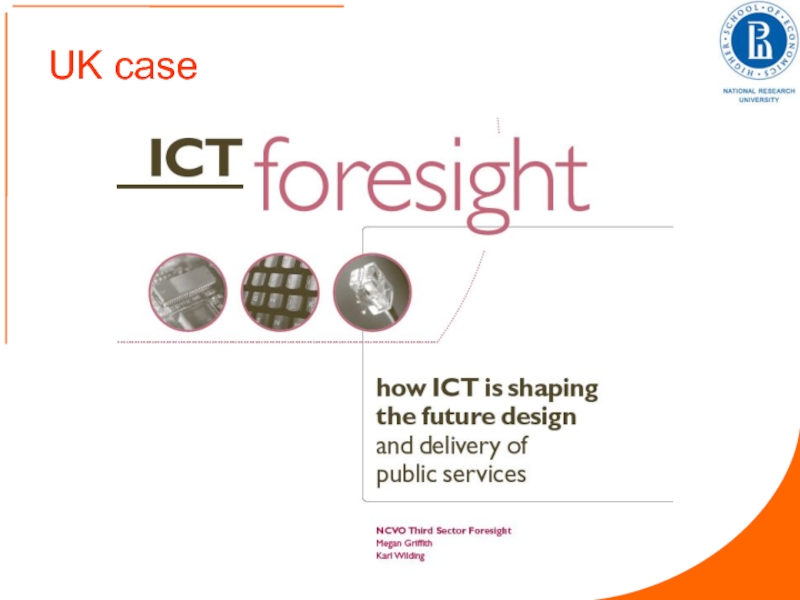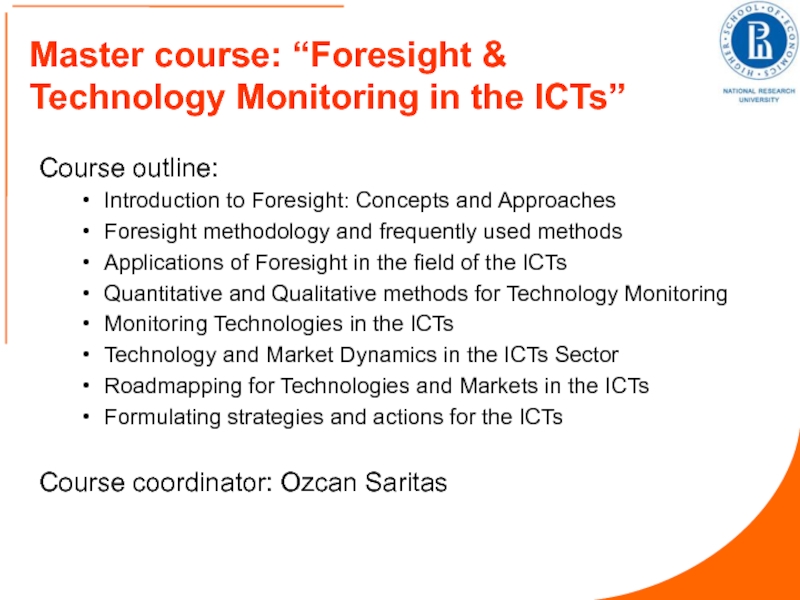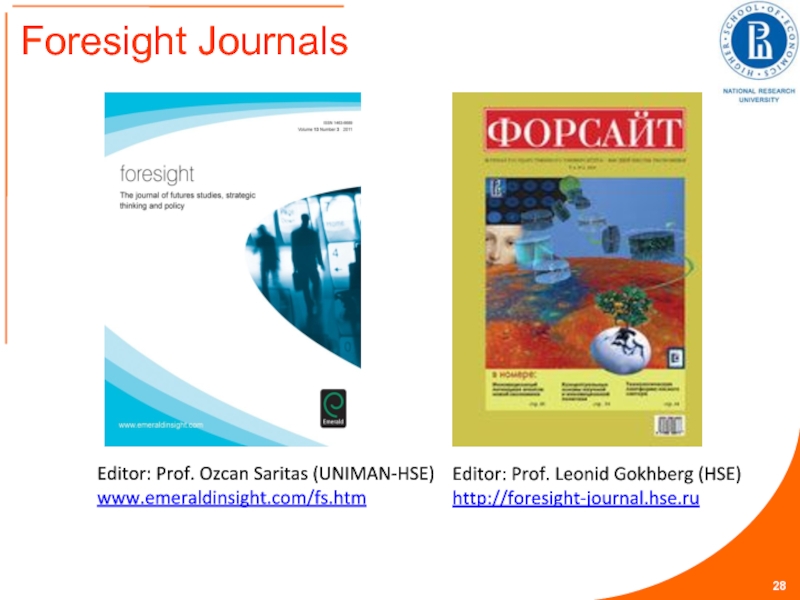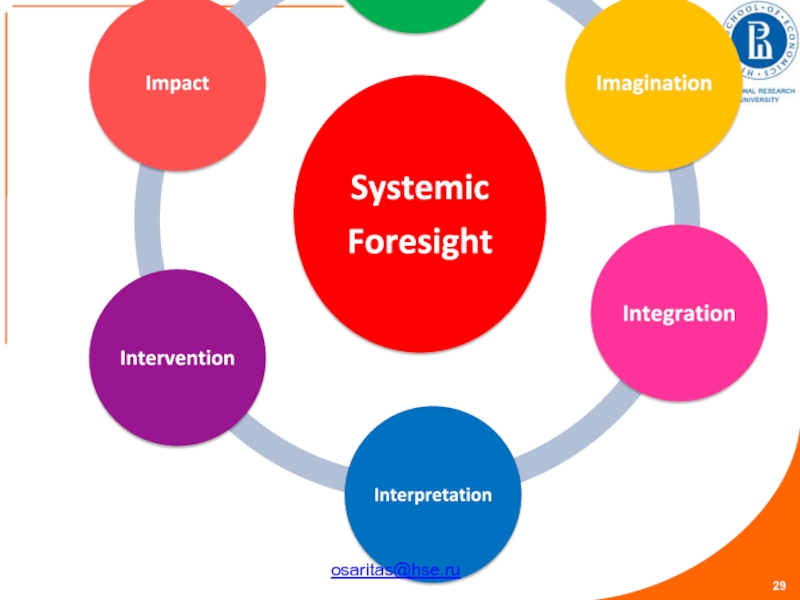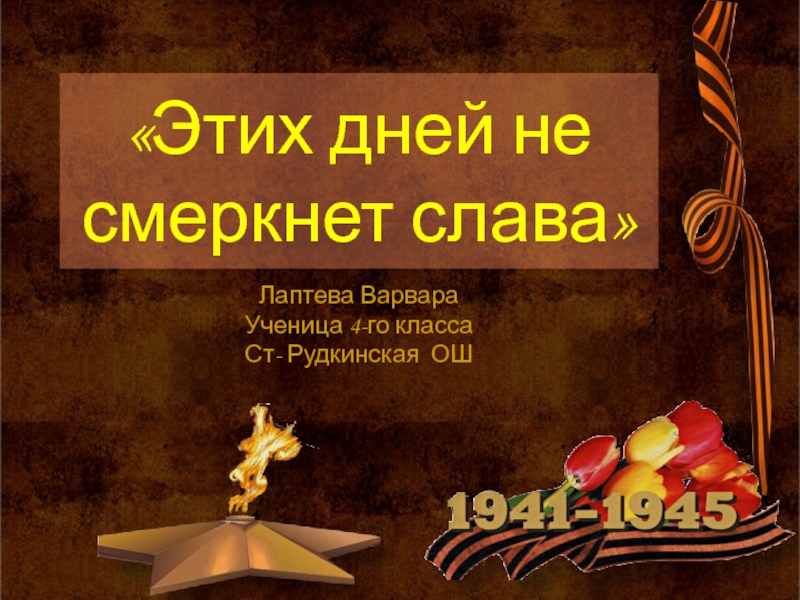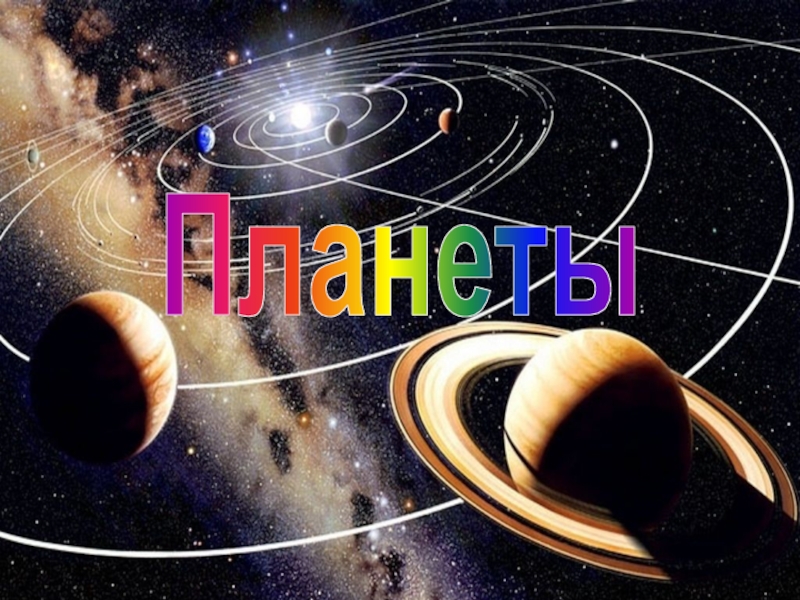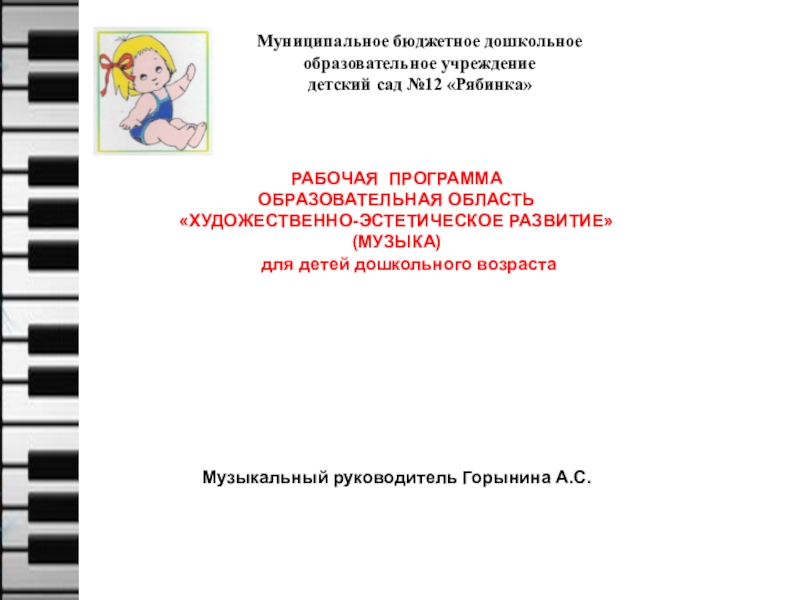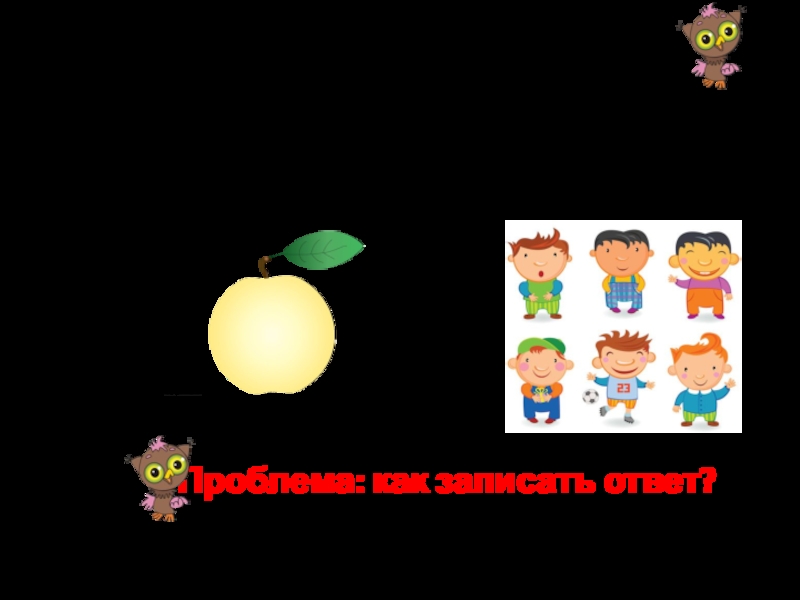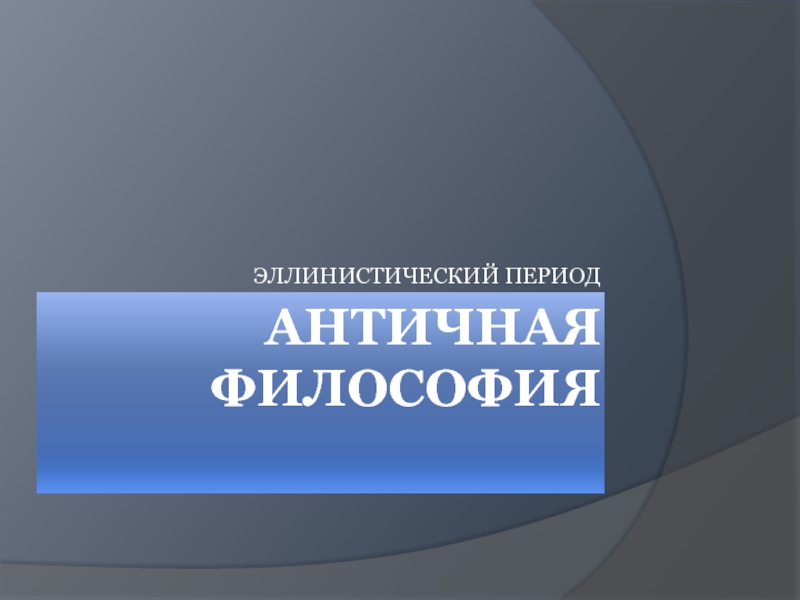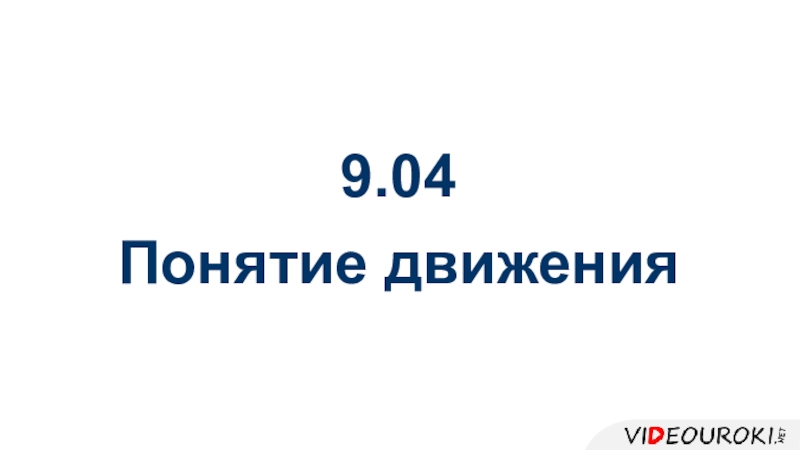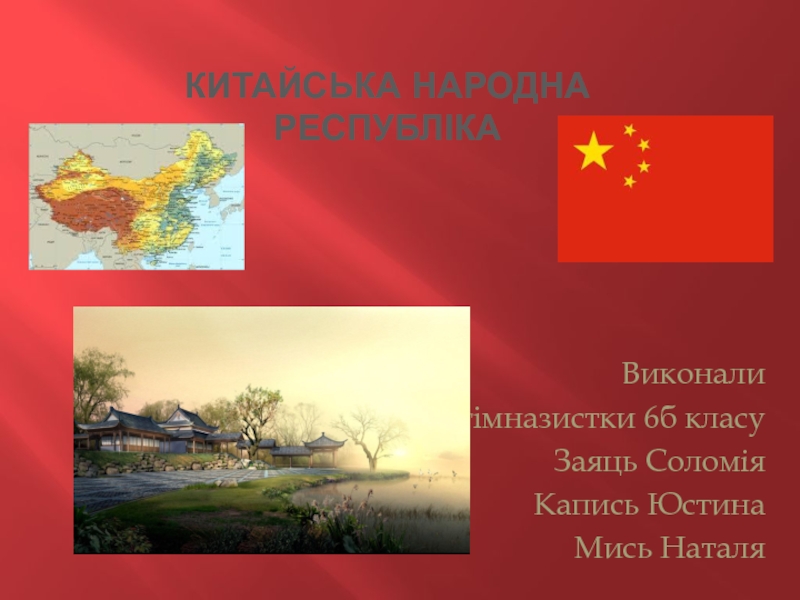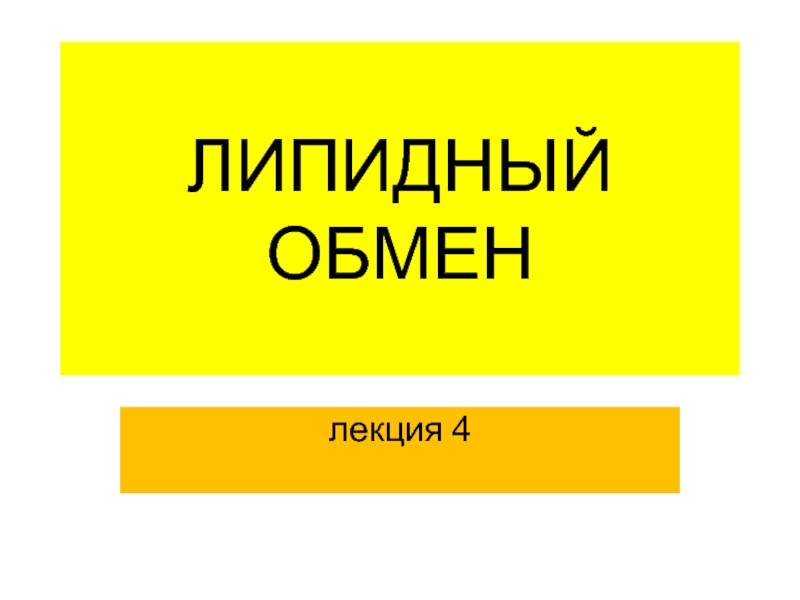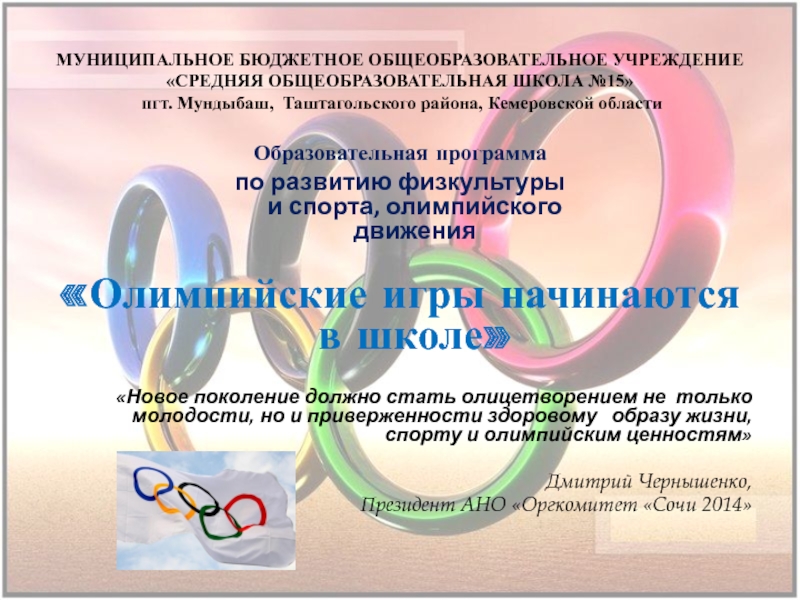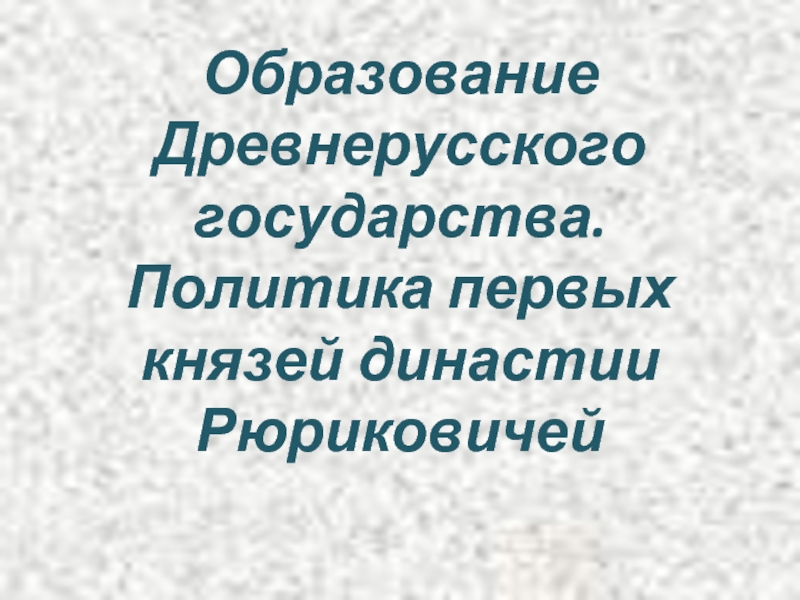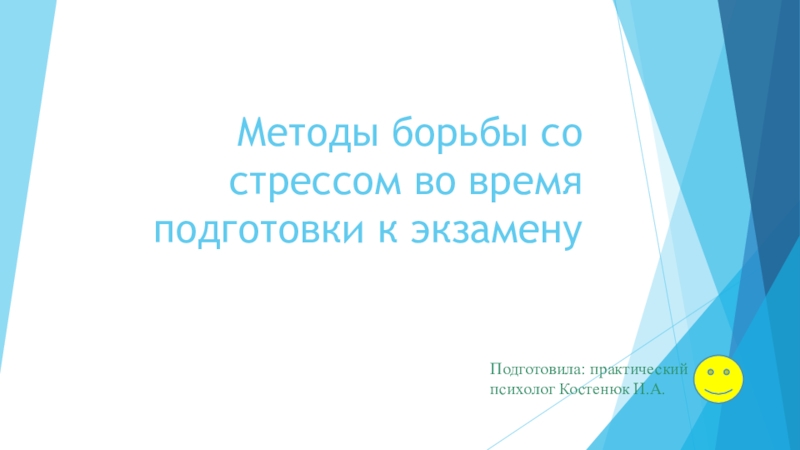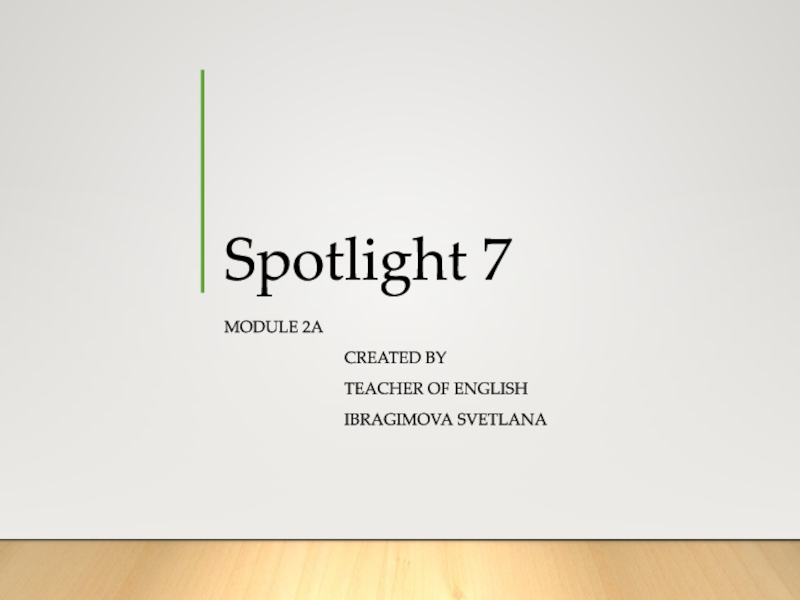Разделы презентаций
- Разное
- Английский язык
- Астрономия
- Алгебра
- Биология
- География
- Геометрия
- Детские презентации
- Информатика
- История
- Литература
- Математика
- Медицина
- Менеджмент
- Музыка
- МХК
- Немецкий язык
- ОБЖ
- Обществознание
- Окружающий мир
- Педагогика
- Русский язык
- Технология
- Физика
- Философия
- Химия
- Шаблоны, картинки для презентаций
- Экология
- Экономика
- Юриспруденция
Dr. Ozcan Saritas osaritas@hse.ru Introduction to Foresight Concepts,
Содержание
- 1. Dr. Ozcan Saritas osaritas@hse.ru Introduction to Foresight Concepts,
- 2. Printing, gunpowder and the compass have changed
- 3. Foresight – ’50s to ‘80sThe existence of
- 4. Foresight - ’90sForesight for S&T policy making
- 5. Foresight – 2000sChange in the S&T dominated
- 6. Foresight“the application of ‘systematic’, ‘participatory’, ‘future-intelligence-gathering and
- 7. EFMN mapped Foresight exercises per region
- 8. Mapping of Foresight activities
- 9. Sponsors & target audiences of Foresight
- 10. Objectives of ForesightEFMN (2008)
- 11. Sectors focused
- 12. Foresight methods usedEFMN (2008)
- 13. Foresight outputsEFMN (2008)
- 14. Foresight – 2010s?New global context and new
- 15. Technological advancements
- 16. Key questions to be answeredWhat kind of
- 17. Key requirements for ForesightUnderstandingReal-life systems and natural
- 18. Intelligence Creates shared understanding and mutual appreciation
- 19. Science &EcologyTechnology& EconomicsSocioeconomicsPolitics & ValuesWhat is possible?What is desirable?What is feasible? Systemic Foresight
- 20. Understanding systems: STEEPVVEPETSForesight
- 21. Understanding the time spans of change
- 22. Foresight Methods & Tools
- 23. Foresight in ICTsICTs are critical in terms
- 24. EU ICT agendaThe European Commission’s ICT Work
- 25. Russian ICT policyThe “Strategy for development of
- 26. UK case
- 27. Master course: “Foresight & Technology Monitoring in
- 28. Editor: Prof. Leonid Gokhberg (HSE)http://foresight-journal.hse.ruForesight JournalsEditor: Prof. Ozcan Saritas (UNIMAN-HSE)www.emeraldinsight.com/fs.htm
- 29. osaritas@hse.ru
- 30. Скачать презентанцию
Printing, gunpowder and the compass have changed the whole face and state of things throughout the world... (Francis Bacon, 1620).Improvements in machinery go hand in hand with the division of labor,
Слайды и текст этой презентации
Слайд 1Dr. Ozcan Saritas
osaritas@hse.ru
Introduction to Foresight
Concepts, methodology &
applications in the
ICTs
Слайд 2Printing, gunpowder and the compass have changed the whole face
and state of things throughout the world... (Francis Bacon, 1620).
Improvements
in machinery go hand in hand with the division of labor, and very pretty machines ... facilitate and quicken production... (Adam Smith, 1776).The bourgeoisie cannot exist without constantly revolutionizing the means of production! (Karl Marx, 1848).
Knowledge is the chief engine of progress in the economy (Alfred Marshall, 1897).
The entrepreneur and his search for new combinations is the driving force in all economic development... (Joseph Schumpeter, 1911).
Science and basic research are incredibly powerful sources of future economic and societal development... (Vannevar Bush, 1945).
Some ‘drivers of change’
Слайд 3Foresight – ’50s to ‘80s
The existence of human on the
earth surface: The act of anticipation as an unavoidable human
characteristic‘50s: The principles of trend extrapolation and social indicators, and the methods of expert analysis (e.g. Delphi & cross-impact). First computer simulations become well-known
‘60s: Narrowly focused technology-oriented forecasting activities – the probabilistic assessment of what is likely to happen in the future
‘70s: Change in the understanding of forecasting due to increasing complexity and uncertainty of societies and economies (e.g. unpredicted oil shocks in the ‘70s)
‘80s: Multiple futures thinking, participatory activities, where both processes (i.e. networks, tacit outcomes) and products (i.e. codified outputs) were given emphasis
Слайд 4Foresight - ’90s
Foresight for S&T policy making by government, industry
and other organisations
The key elements of Foresight in the
1990s:S&T is central focus
Systematic process
Longer timeframe than in existing S&T planning
S&T in relation to economic and social developments
“Foresight is the process involved in systematically attempting to look into the longer term future of science, technology, the economy, and society with the aim of identifying areas of strategic research and the emerging new technologies likely to yield the greatest economic and social benefits” (Martin, 1995).
Слайд 5Foresight – 2000s
Change in the S&T dominated appearance with increasing
concerns on social aspects due to:
The increasing importance of innovation
(both technological and organisational)The development of service economies. Considerable portions of economic activity, employment and output have started taking place in service sectors of the economy
Other developments including globalisation, changes in demographic structures and in cultural practices, and environmental affairs
Recognition of the close relationship between S&T and society
Слайд 6Foresight
“the application of
‘systematic’,
‘participatory’,
‘future-intelligence-gathering and medium-to-long-term vision building
process’ to
‘informing present-day decisions and mobilising joint actions’”
Слайд 14Foresight – 2010s?
New global context and new drivers of change
Increased
financial, trade and investment flows
Rapid and accelerating technological progress; ICTs,
biotechnology, fuel cells, nanotechnologiesNew international regulations and standards on trade, quality, labor, environment, intellectual property rights
New systems to design, produce, distribute, and manage products and services
Global value chains and production networks
Слайд 16Key questions to be answered
What kind of developments will occur?
Which
ones of them could be beneficial and which ones harmful?
How
soon may these developments occur?What might be the first signs that these developments are happening?
Where and how might the leading indications of impeding change be seen?
Who is in a position anywhere to observe these indications?
What is worth to minimise the extent of surprise introduced by these indications?
Who needs to know about these impending changes?
Слайд 17Key requirements for Foresight
Understanding
Real-life systems and natural settings with a
multi-contextual focus
Increasing interrelationships and interdependencies and thus more complex and
uncertain situationsAnticipation
Understanding, appreciating and modelling present & anticipated long-term developments
Intelligence gathering to explore novel ideas and avoid shocks
Inclusivity
Interactive and participative ways of debate and analysis
Continuous interaction of stakeholders on equal terms
Establishment of new social networks
Policy and action orientation
Elaboration of strategic visions based on a shared sense of commitment
Implications for present-day decisions and actions
Methodological support
Using quantitative and qualitative methods and building methodologies by combining them to fit for purpose
Integration of best practices, methods and tools
Слайд 18Intelligence
Creates shared understanding and mutual appreciation of issues at
hand
Imagination
The input from scanning is synthesised into conceptual models
of the situations involved in the real world Integration
Analyses the alternative models of the future and ‘prioritises’ them, through intensive negotiations among system actors and stakeholders, to create an agreed model of the future
Interpretation
Translates future visions into long-, medium-, and short-term actions for a successful change programme
Intervention
Creates plans to inform present day decisions for immediate change to provide structural and behavioural transformations
Impact
Assesses the results and impacts of Foresight exercise, learns from experience and provides input for next round
Phases of Foresight
Interaction
Слайд 19Science &
Ecology
Technology
& Economics
Socioeconomics
Politics & Values
What is possible?
What is desirable?
What is
feasible?
Systemic Foresight
Слайд 23Foresight in ICTs
ICTs are critical in terms of improving the
competitiveness of economies and industry and meeting the demands of
society. Among the critical impacts of ICTs are:Innovation and increased productivity by facilitating creativity and management
Modernisation of services such as health, finance, education and transport
Advances in S&T by enabling access to information, generation new information and knowledge and processing complex data sets
Real time communication and networking within and between societies and businesses
Слайд 24EU ICT agenda
The European Commission’s ICT Work Programme 2011-2012 under
FP7 is divided into eight ‘Challenges’ of strategic interest to
European society, plus research into ‘Future and emerging technologies’ and support for horizontal actions, such as international cooperation and pre-commercial procurement:Challenge 1 – Pervasive and Trusted Network and Service Infrastructures
Challenge 2 – Cognitive Systems and Robotics
Challenge 3 – Alternative Paths to Components and Systems
Challenge 4 – Technologies for Digital Content and Languages
Challenge 5 – ICT for Health, Ageing Well, Inclusion and Governance
Challenge 6 – ICT for low carbon economy
Challenge 7 – ICT for the Enterprise and Manufacturing
Challenge 8 – ICT for Learning and Access to Cultural Resources
Future and Emerging Technologies (FET)
In addition, ICT research under the following themes is also supported by the EU in FP7:
e-Infrastructures
International Cooperation
Pre-Commercial Procurement
http://cordis.europa.eu/fp7/ict/programme/home_en.html
Слайд 25Russian ICT policy
The “Strategy for development of information society in
Russia” determines the following main goals and objectives of the
national ICT policy:Establishment of up-to-date IT infrastructure, provision of high-quality services based on it and ensuring a good level of public access to information and technologies
Improvement of education, health care, social protection on the basis of development and use of ICTs
Improvement of the State guarantees system concerning the Constitutional human rights in the information area
Development of the economy of the Russian Federation on the basis of ICTs
Improvement of the efficiency of the State and local governance, co-operation of the civil society and business with public authorities, quality and timeliness of public services
Development of science, technology and engineering, training of skilled specialists in the area of information and telecommunication technologies
Preservation of cultures of the multinational population of the Russian Federation, enhancement of public ethical and patriotic values, development of a system for cultural and humanity education (preservation of cultural and humanity wealth and provision of people’s access to them)
Opposition to the threat of using information and telecommunication technologies for damaging the Russian national interests
Слайд 27Master course: “Foresight & Technology Monitoring in the ICTs”
Course outline:
Introduction
to Foresight: Concepts and Approaches
Foresight methodology and frequently used methods
Applications
of Foresight in the field of the ICTsQuantitative and Qualitative methods for Technology Monitoring
Monitoring Technologies in the ICTs
Technology and Market Dynamics in the ICTs Sector
Roadmapping for Technologies and Markets in the ICTs
Formulating strategies and actions for the ICTs
Course coordinator: Ozcan Saritas
